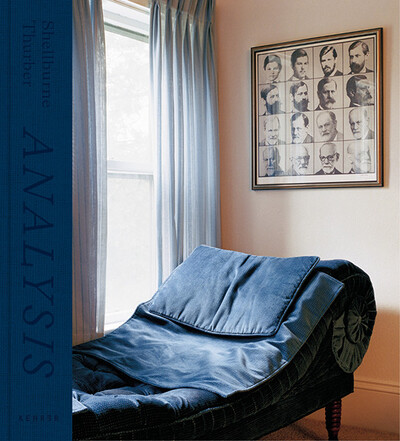Nous utilisons des cookies pour améliorer votre expérience. Pour nous conformer à la nouvelle directive sur la vie privée, nous devons demander votre consentement à l’utilisation de ces cookies. En savoir plus.
Analysis
Kehrer - EAN : 9783969000960
Édition papier
EAN : 9783969000960
Paru le : 10 mai 2023
54,00 €
51,18 €
Disponible
Pour connaître votre prix et commander, identifiez-vous
Notre engagement qualité
-
 Livraison gratuite
Livraison gratuite
en France sans minimum
de commande -
 Manquants maintenus
Manquants maintenus
en commande
automatiquement -
 Un interlocuteur
Un interlocuteur
unique pour toutes
vos commandes -
 Toutes les licences
Toutes les licences
numériques du marché
au tarif éditeur -
 Assistance téléphonique
Assistance téléphonique
personalisée sur le
numérique -
 Service client
Service client
Du Lundi au vendredi
de 9h à 18h
- EAN13 : 9783969000960
- Editeur : Kehrer
- Date Parution : 10 mai 2023
- Disponibilite : Disponible
- Barème de remise : NS
- Nombre de pages : 156
- Format : H:300 mm L:330 mm
- Poids : 1.101kg
- Résumé : For much of her life, American photographer Shellburne Thurber has been engaged in an ongoing photographic investigation of the relationship between constructed space and human energy. Long intrigued by the idea of lived space as an extension of the body and a site for projection, she has photographed a wide va- riety of subjects, beginning with the homes of family and friends who have passed, to generic back road motels, churches, aban- doned and derelict homes and hospitals, as well as commis- sioned projects such as the renovation of the Boston Athenæum and the Saint-Gaudens National Historic Site. She is especially interested in spaces that are both public and private. This volume comprises a selection of images Thurber made in 1999 and 2000 of psychoanalysts’ offices in Buenos Aires, Ar- gentina, and the New England area of the United States. From the text Psychoanalytic Interiors by Lia Gangitano: While the subject of psychoanalysis has appeared in the work of many contemporary artists, particularly through the citation of psychoanalytic theory, Thurber takes another route in arriving at one of her most significant bodies of work—a series of square format chromogenic prints depicting the unoccupied office spaces of psychoanalysts. Initiated in 1998 in Buenos Aires, the project continued through a Bunting Fellowship (Radcliffe Insti- tute for Advanced Study, Harvard University) in 1999–2000, en- abling her to pursue the project in the Boston area. Unlike art practices that seek to demonstrate theoretical premises, Thurber’s work instead elaborates upon a long photographic his- tory, fusing particular formal concerns with an interest in people: their varying abilities to communicate, and the ways in which the constructed environment (homes, motels, offices) can artic- ulate, by containing, the complexities of the lives that pass through them. The issues most clearly raised by her psychoana- lytic interiors and the ideas they evoke — absence, emptiness, the unconscious, the unstable boundaries between self and oth- er— are also subjects of Thurber’s work as a whole. From the text Staring into Space by Daniel Jacobs: The analytic office will forever be a space of paradox: a place of safety as well as danger. A place where one tries to hide from oneself among attempts at self-discovery. A place where it is a joy “to remain hidden and a disaster not to be found”. It is a space that is at once private and shared; a space whose posses- sion is contested. The objects in the rooms that Thurber captures incite shifting feelings of desire and distress as our associations drift among them. As Elizabeth A. Danze observes, “The room is [the analyst’s] space, not mine. It has things in it and I look at [them] almost every day. After a while they start to become mine too, but not in the same way they are his. I don’t know their his- tory and I don’t know his, but I start to overlay mine onto them.”


